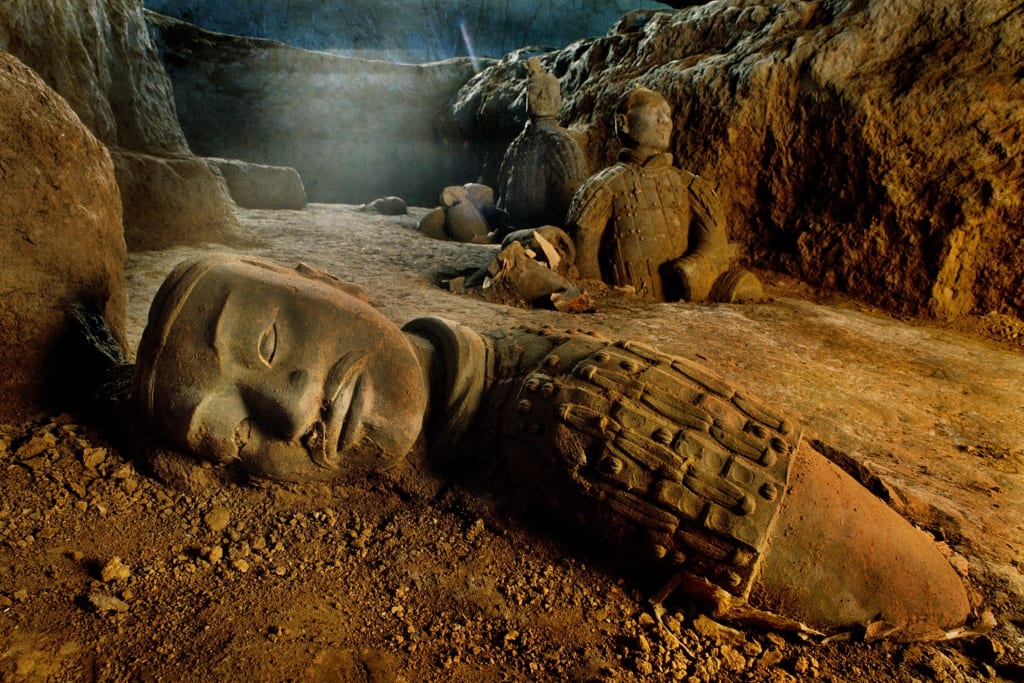
Deep within the vast expanse of our planet lies the frigid land of Antarctica, the coldest and most inhospitable continent in the world. Stretching over 5 million square miles, Antarctica is covered in ice sheets that breach more than a mile deep. The average daily temperature is a bone-chilling negative 49 degrees Fahrenheit, and wind speeds can reach over 100 miles per hour. Today, the only inhabitants of this barren landscape are scientists who work in research stations scattered across the continent.
Mainstream geologists have long held the belief that ancient humans never settled on Antarctica due to its hostile climate. However, in an astonishing turn of events, satellite images captured in 2016 revealed a curious formation emerging from the ice – a formation that some researchers speculate could be a man-made pyramid. Recent reports have emerged describing massive pyramids jutting out of the ice and snow, resembling those of Egypt but dwarfing them in scale. One such pyramid boasts a perfectly square base that measures an astounding two kilometers on each side. This revelation has sparked a captivating question: Did our ancestors truly reach Antarctica and possibly even establish settlements, leaving behind a man-made pyramid hidden beneath the ice?
The notion of a man-made pyramid beneath the Antarctic ice raises a multitude of intriguing inquiries. How could such a colossal structure be constructed in the unforgiving environment of Antarctica? When could this feat have been achieved, and by whom? Antarctica, as we've been told by geologists, has been encased in ice for millions of years. However, mounting evidence suggests that certain areas may have been ice-free until around 4000 BC.
Curiously, tales from Polynesian cultures also speak of their culture heroes reaching the Antarctic continent. These stories, collected by French academic Argo, describe a strange land with white rocks emerging from the water like icebergs, populated by seals and penguins. These descriptions remarkably align with the Antarctica we know today. Polynesian people believed this to be their place of origin, begging the question: What led them to hold this belief?
Evidence indicating a different climate in Antarctica thousands of years ago emerged in 2017 when German geologists extracted core samples from the Antarctic seafloor. These samples indicated conditions that could have supported vegetation, pointing to a more temperate climate. This discovery challenges our understanding of the continent's history and offers insights into Earth's past.
Journeying to another corner of the world, we find ourselves in Cairo, Egypt, where the Giza necropolis stands, a testament to ancient engineering and craftsmanship. At its heart is the Great Sphinx, an iconic statue that continues to captivate the world. The Sphinx, with its imposing size and enigmatic expression, has fascinated scholars and visitors alike for centuries. Despite extensive study, many of its secrets remain hidden, waiting to be unveiled.
Scholars generally attribute the construction of the Sphinx to Pharaoh Khafre of ancient Egypt's fourth dynasty around 2550 BC. However, debates persist regarding its actual origin. An inventory stela that records repairs made to the Sphinx by Pharaoh Khufu (Khafre's predecessor) suggests a much older structure. Some experts argue that the Sphinx might date back to a time before our known history, shrouding its true origins in mystery.
Visiting another chapter of history, we encounter the mysterious Newkirk collection. Greg and Dana Newkirk curate a unique assortment of objects that are believed to be cursed. These objects, sent by people from around the world, come with tales of misfortune and unease. Though seemingly ordinary, these items bear an aura of intrigue, drawing people in even as they caution against the potential danger they pose. These objects raise questions about the nature of curses and the unexplained hold they seem to exert on human fascination.
Stepping back further in time, we find ourselves in the ancient city of Pompeii, a Roman settlement overshadowed by the mighty Vesuvius. This city met its tragic fate in 79 AD when a volcanic eruption blanketed it in ash and preserved it for centuries. Archaeologists have meticulously uncovered Pompeii, revealing a snapshot of daily life in ancient Rome. Yet, the city's most extraordinary legacy may reside in the Villa De papyrus, an opulent Roman villa and its accompanying library.
Buried within the Villa's ruins are over 1800 papyrus scrolls, preserving the thoughts and writings of individuals from antiquity. These scrolls, through cutting-edge technology, offer a glimpse into the intellectual life of ancient Romans, potentially housing the works of philosophers and poets. The pursuit of unraveling these texts showcases how the convergence of history and technology can unlock mysteries that have endured for centuries.
As we delve into the past, one theme becomes evident: the allure of the unknown. Whether it's pyramids beneath Antarctic ice, the enigma of the Sphinx, or the curiosity surrounding cursed objects, humanity's thirst for understanding drives us to explore and seek answers. The past, with its riddles and revelations, continues to shape our understanding of ourselves and our world, urging us to unveil the stories that time has veiled.
About the Creator
Bea
Unveiling the World Through My Words: As a passionate writer, I delve into the depths of various topics, from the enigmatic realms of science and technology to the intricate emotions that shape our human experience.






Comments
Bea is not accepting comments at the moment
Want to show your support? Send them a one-off tip.